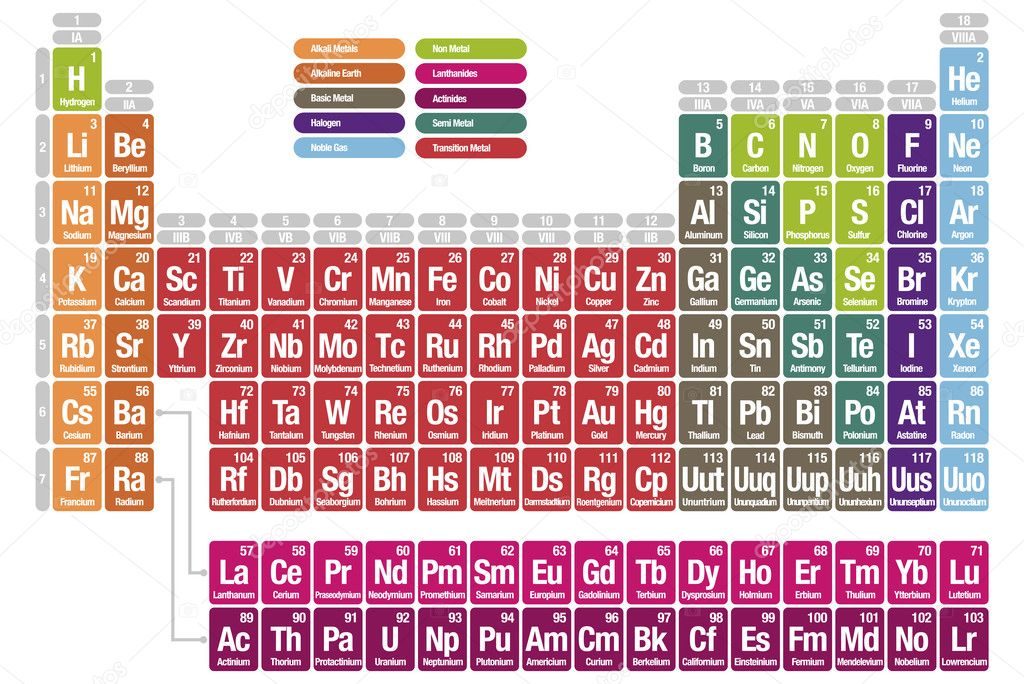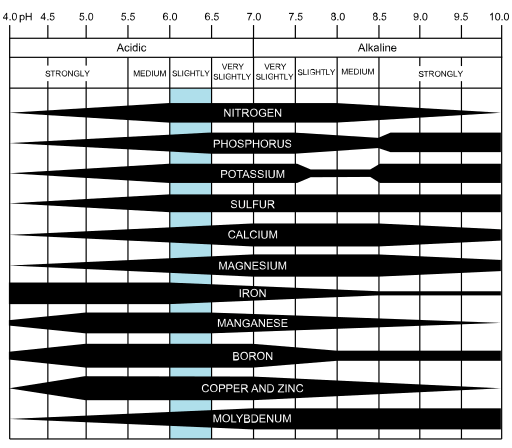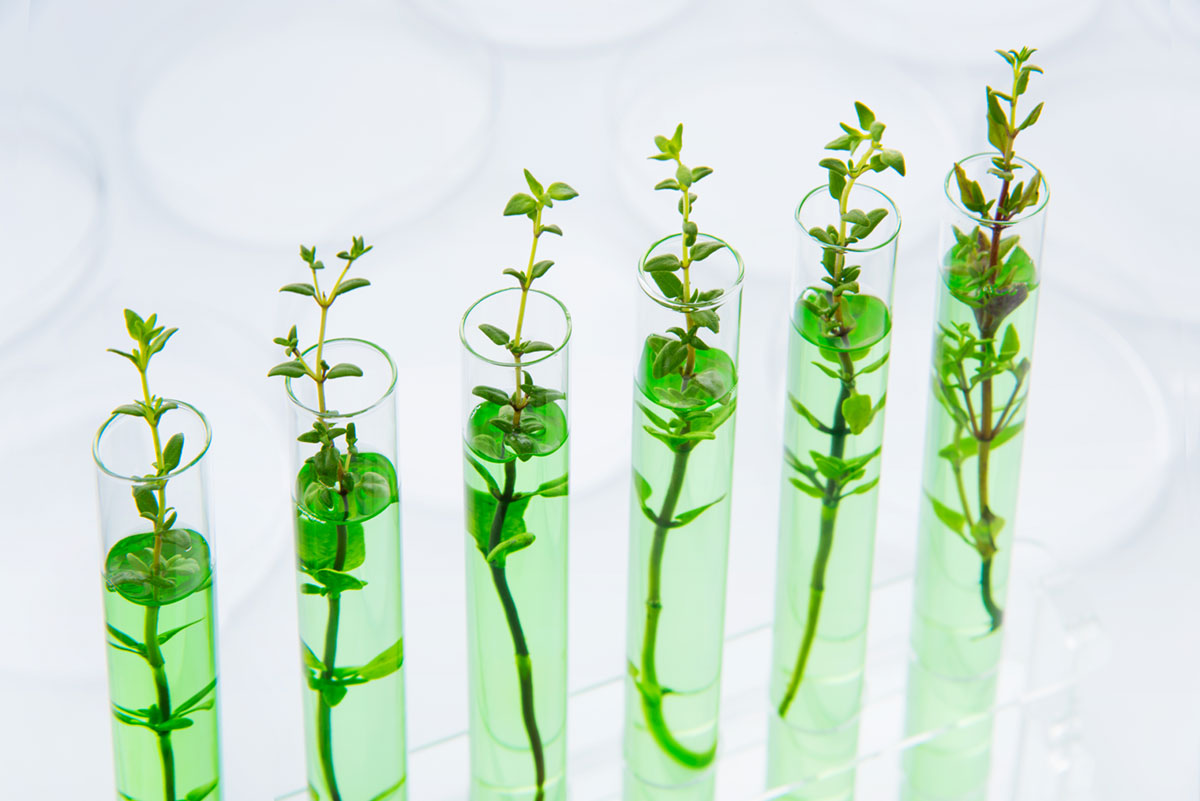You probably know that plants require nutrients to grow to their full potential. However, you may also be wondering about the limiting nutrients for plant growth. Plants require 17 different elements, and a deficiency in any of these can stunt and/or weaken plants.
A number of factors including pH and growing media makeup impact how available nutrients are to plants. Understanding how these conditions influence nutrient and plant interactions will help you provide the correct amount of nutrients to your plants.
Nutrients also behave differently in soil-based and hydroponic growing systems. Tools such as a hydroponic ppm chart and pH nutrient availability chart can help you apply the correct amount of nutrients to your plants.
Essential Nutrients
While plants can grow without some elements, their health and growth will eventually cease without access to all necessary elements. If not present in a high enough amount, any of these elements can be limiting nutrients for plant growth. The 17 elements listed below are essential for plant growth and reproduction.
Generally, these elements are broken down into macronutrients and micronutrients. Those in the macro category include those obtained through the soil which include nitrogen (N), phosphorus (P), potassium (K), sulfur (S), calcium (Ca), and magnesium (Mg).
There are also macronutrients which are obtained through the air and/or water. You do not need to apply these elements to your plants. They include Carbon (C), Oxygen (O), and Hydrogen (H).
Necessary plant micronutrients include boron (B), chlorine (Cl), copper (Cu), iron (Fe), manganese (Mn), molybdenum (Mo), nickel (Ni), and zinc (Zn).
How Nutrients Function in Plants
Most elements perform a number of different functions in plants. Some of the main roles and functions are listed below.
Nitrogen (N): component of all amino acids which include protein building blocks and enzymes, essential for chlorophyll and therefore photosynthesis, used to create DNA, excess can cause susceptibility to diseases and pests
Phosphorus (P): necessary for energy transfer in plants, necessary for protein and nucleic acid synthesis, component of cell membranes
Potassium (K): opens and closes stomata therefore aiding in plant respiration and cooling, activates plant enzymes
Sulfur (S): component of amino acids and vitamins, involved in respiration
Calcium (Ca): involved in cell division and cell growth, helps form cell walls, makes phosphorus more available, protects against fruit rot
Magnesium (Mg): essential element of chlorophyll, necessary to the formation of fats and sugars
Carbon (C): component of all organic compounds
Oxygen (O): component of most organic compounds
Hydrogen (H): component of most organic compounds
Boron (B): involved in the activation of cell division, helps move sugars from leaves to roots
Chlorine (Cl): involved in chlorophyll synthesis, activates enzymes
Copper (Cu): used in chlorophyll production, acts as a catalyst for enzyme reactions
Iron (Fe): component of many enzymes, used to synthesize chlorophyll
Manganese (Mn): necessary for production of chlorophyll, activates enzymes
Molybdenum (Mo): involved in protein synthesis, helps legumes fix nitrogen
Nickel: (Ni): helps with nitrogen uptake
Zinc (Zn): used in enzyme activation, regulates internal plant pH

Nutrients Needed at Stages of Plant Growth
Plants need various concentrations of elements at different stages of plant growth. Stages of plant growth can be broken down into the four general categories of seedling, vegetative growth, flowering, and fruiting.
During the seedling stage, plants are focusing on the initial development of their vegetative tissues and roots. At this point they require elements which allow for this growth. However, since plants are still small, they do not require a large amount of fertilizer.
During the main vegetative growth stage, plants are completing cell division at a high rate. They require larger amounts of elements such as nitrogen and phosphorus.
As plants begin to flower and fruit, their nutrient requirements shift. The need for nitrogen decreases, and plants require larger proportions of calcium and various micronutrients.
Fortunately, many nutrient lines separate nutrient products based on stages of plant growth. As your plant enters a new phase of growth, simply select a product that is recommended for that phase.
Factors Affecting Nutrient Availability
While plants cannot take up nutrients if they are not available in the growing media or solution, there are other factors impacting uptake. Watering practices play a role in how plants take up nutrients. For example, even if calcium levels are adequate in the soil, calcium can be low in plants if there is not enough water.
Another factor affecting nutrient availability in soil-based growing media is the cation exchange capacity (CEC). The CEC is a measure of how many positively charged ions, cations, a soil can hold. As plants take up these ions, the soil can release more to replenish those that were used by the plant.
Many nutrients exist in the form of these positively charged ions. As the CEC increases, a soil is able to hold more of these cations. You can increase a soil’s CEC by adding organic matter in the form of cover crops, composts, and mulches. Adding certain types of clay to a soil will also increase the CEC.
Some naturally occurring substances, called biostimulants, can increase plant nutrient availability. Some biostimulants are seaweed extracts, humic acids, and microbial inoculants.
The pH of growing media or solution also impacts the availability of nutrients. You will read more about this interaction in another section.
Nutrients in Soil
If you’re growing plants in a soil-based media, the physical and biological makeup of the soil impacts nutrient availability. A soil’s physical properties and geological history determine the presence of certain substances. Different rocks produce different elements to soils and therefore plants. Many rocks are great sources of trace elements such as magnesium, molybdenum, and zinc.
The history of a soil also affects the pH. Areas with high levels of alkaline rocks such as limestone have a higher soil pH.
The biological activity in a soil also affects plant nutrient availability. Certain bacteria and fungi alter substances into a form that plants can take up. For example, the group of bacteria known as rhizobia convert gaseous nitrogen from the atmosphere into a plant available form.
Nutrients in soil are also impacted by the soil cation exchange capacity. As mentioned above, a higher CEC will allow a soil to hold more cations. Standard soil tests will provide you with a measure of your soil’s CEC. Soils that are heavier in clay and organic matter generally have high CECs. Therefore, one way to increase the CEC is to increase the organic matter (OM) content of your growing media. You can increase the OM content of a soil by adding cover crops, compost, or humic acids.
While soils can hold compounds in place, nutrients can also leach out of soil-based growing media. Just because you apply fertilizer, it doesn’t mean the contained elements cannot be limiting nutrients for plant growth. As rainfall or irrigation water washes out nutrients, they are no longer available for plant uptake. Nitrogen is especially susceptible to leaching. Not only does this leaching leave plants without proper nutrition, but it also can negatively impact the environment through pollution.
Nutrients in Hydroponic Systems
Nutrients in hydroponic systems behave differently than those in soil-based growing systems. First off, the vast majority of the elements available in hydroponic systems must be applied by the grower. In soil, some nutrients are available from the growing media itself. In hydroponic systems, there is no release of nutrients from the breakdown of organic matter, and there is no soil to hold and release nutrients. A hydroponic solution does not have a cation exchange capacity.
However, your water does impact the nutrients in your solution. Three things to look at in water pH, alkalinity, and electrical conductivity (EC). All three of these factors have an impact on the limiting nutrients for plant growth.
The pH impacts availability and behavior of certain nutrients. You will read more about pH below. Alkalinity is the measure of your water’s ability to buffer against additions of acid. When people say they have hard water, they have alkaline water. The electrical conductivity is a measure of the salts that are dissolved in water.
Nutrients cannot leach out of hydroponic solutions. Instead, they are constantly in solution until they are taken up by the plants.
PPM Chart for Hydroponics
As you read above, precise nutrient applications are more important in hydroponic systems than in soil systems. One reason is because all available vital elements come from those that are applied. There are no compounds held in the soil system, waiting to be released over time.
With that said, part per million (ppm) charts are especially helpful to hydroponic growers. These charts provide the optimum concentrations of nutrients at different stages of a plant’s growth.
One important thing to note is that these charts are for specific product lines. A chart that applies to products from one company can not be applied to products from another company. However, all charts contain similarities.
Generally, you want the ppm of your hydroponic solution to be lower at the beginning of the plant’s growth and higher when the plant is larger and flowering. PPM charts usually break ppm ranges down by week or by a number of plant growth stages. These stages include seedling, early vegetative, full vegetative, early flowering, full flowering, and end of flowering.
Mobile Versus Immobile Nutrients
Different elements experience various levels of mobility within plants. This affects deficiency symptoms.
Some nutrients as known as immobile. This means that once they are incorporated within a plant, they cannot move to other areas of the plant. Deficiencies in immobile nutrients appears in new plant growth. Immobile nutrients include calcium, sulfur, boron, copper, iron, manganese, and zinc.
Mobile nutrients are able to move throughout a plant. Deficiencies in these elements appears in older growth. Mobile nutrients include nitrogen, phosphorus, potassium, magnesium, chlorine, molybdenum, and nickel.
pH Nutrient Chart
Another important thing to consider is how pH affects nutrient availability. The pH is a measure of how many hydrogen ions are in a soil or solution. This measurement tells you how acidic or basic a solution is. The pH scale goes from 0 to 14 with 0 being very acidic and 14 being very basic.
You can calculate the pH of your soil or hydroponic growing solution using simple tests. Some nutrients are more available at a lower pH (more acidic) and some are more available at a higher pH (more basic). If the pH is too high or too low, the unavailable elements can become limiting nutrients for plant growth.
One way to easily digest the availability of elements based on pH is a pH nutrient chart, such as that belo

As you can see, an optimum pH is 6.0-6.5. This pH range is just a little below the neutral value of 7.0. At this range, all essential nutrients are available to plants.
If pH is too low, plants may suffer from toxicity caused by metals including iron and manganese. This can cause great damage to your plants and eventually kill them.
When considering pH, remember that hydroponic and soil-based growing systems have different abilities to resist change in pH. The pH is less of a concern in soil systems, as components of the soil have the ability to buffer pH. Compounds such as clay and organic matter may either accept or release hydrogen atoms, which impacts the pH.
Hydroponic solutions cannot buffer pH as well, since they are solely made up of water and any components added to the solution. Therefore, growers must pay more attention to how additions of different nutrients impact the pH and consequently nutrient availability.
Testing for Limiting Nutrients for Plant Growth
The best way to properly apply nutrients for plant growth is to understand their role and function in different plant species and at different stages of growth.
However, even if you’ve applied what you think is the correct amount of nutrients and corrected your solution’s pH, you might think your plants are deficient. One way to check is through a plant tissue test. This is where you take a sample of a specified plant tissue (leaves, fruits, etc.) and send it into a lab. The lab will analyze the tissue and report any nutrient deficiencies.
However, some nutrient deficiencies take a while to correct. By the time you receive your test results, it may be too late to make any corrections. However, you can still make corrections for the next crop.
In Closing
Now you know more about how to look for and prevent limiting nutrients for plant growth. One important factor to consider is whether you are growing in a hydroponic or soil-based system. Other important factors include the pH of the soil or solution, the species of plant being grown, and the stage of plant growth.
A number of tools can help you figure out the ideal amount of nutrients. These include a pH nutrient chart and a hydroponic ppm chart.
